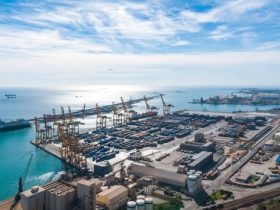
Turkmenistan’s main businesses
Turkmenistan’s economy is predominantly driven by its vast natural resources, with key industries that form the backbone of its economic activities. Below are the main businesses and industries shaping Turkmenistan’s economy:
1. Natural Gas and Oil Industry
Turkmenistan is one of the world’s largest natural gas producers, with the Galkynysh Gas Field being one of the largest reserves globally. The country’s energy sector is dominated by state-owned enterprises like Turkmengaz and Turkmennebit, which manage extraction, production, and export. Turkmenistan exports natural gas to China, Russia, and other Central Asian nations, with pipelines such as the Turkmenistan-China pipeline playing a vital role. Oil extraction and refining, while secondary to gas, also contribute significantly to the economy.
2. Cotton and Textile Industry
As one of the largest producers of cotton in the world, Turkmenistan has a strong focus on agricultural exports. The government has invested heavily in textile manufacturing to boost the value chain of its cotton production. Textiles like cotton yarn, fabrics, and clothing are produced domestically and exported, mainly to Turkey, Russia, and China.
3. Agriculture
Agriculture is a significant sector, employing a large portion of the population. Beyond cotton, Turkmenistan grows wheat, vegetables, and fruits. Livestock farming, including sheep and cattle, is also prominent. Despite water scarcity issues, irrigation-supported farming is vital for domestic consumption and exports.
4. Construction and Infrastructure Development
Turkmenistan has been investing heavily in infrastructure projects, with the construction industry playing a pivotal role. High-profile projects, such as the Ashgabat Olympic Complex and luxury hotels, have been spearheaded by international companies alongside local firms. The government also prioritizes housing and road infrastructure.
5. Chemical and Fertilizer Industry
Leveraging its natural gas reserves, Turkmenistan has developed a robust chemical industry focusing on fertilizers, such as urea and ammonia. These are critical for agriculture and are also exported to neighboring countries.
6. Electricity Production and Export
Turkmenistan has been increasing its electricity production capacity, using natural gas-powered plants. The country exports electricity to Afghanistan, Iran, and other neighboring states, providing an additional revenue stream.
7. Carpet Weaving
Turkmen carpets are globally renowned for their intricate designs and craftsmanship. Carpet weaving is both a cultural tradition and a commercial activity, with exports catering to luxury markets worldwide.
8. Tourism and Hospitality
Although the tourism sector is not as developed as in neighboring countries, Turkmenistan is known for its unique attractions such as the Darvaza Gas Crater (the “Door to Hell”) and the ancient city of Merv. The government is investing in modernizing its tourism infrastructure to attract more visitors.
9. Transportation and Logistics
Turkmenistan is strategically located along the Silk Road and is investing in becoming a transportation hub. The Turkmenbashi International Seaport and rail links with neighboring countries enhance trade connectivity.
10. Telecommunications and Technology
The telecommunications sector is controlled by state-owned operators like Altyn Asyr, which provides internet and mobile services. Although the sector is underdeveloped, there is potential for growth as the government modernizes infrastructure.
Challenges and Opportunities
Turkmenistan’s economy faces challenges such as a lack of economic diversification, water scarcity, and dependency on hydrocarbon exports. However, its strategic location and vast resources offer opportunities for foreign investment and regional trade.
In conclusion, Turkmenistan’s main businesses are deeply rooted in its natural resources, agriculture, and cultural heritage, with growing sectors in construction and trade logistics paving the way for a diversified economy.



Leave a Reply